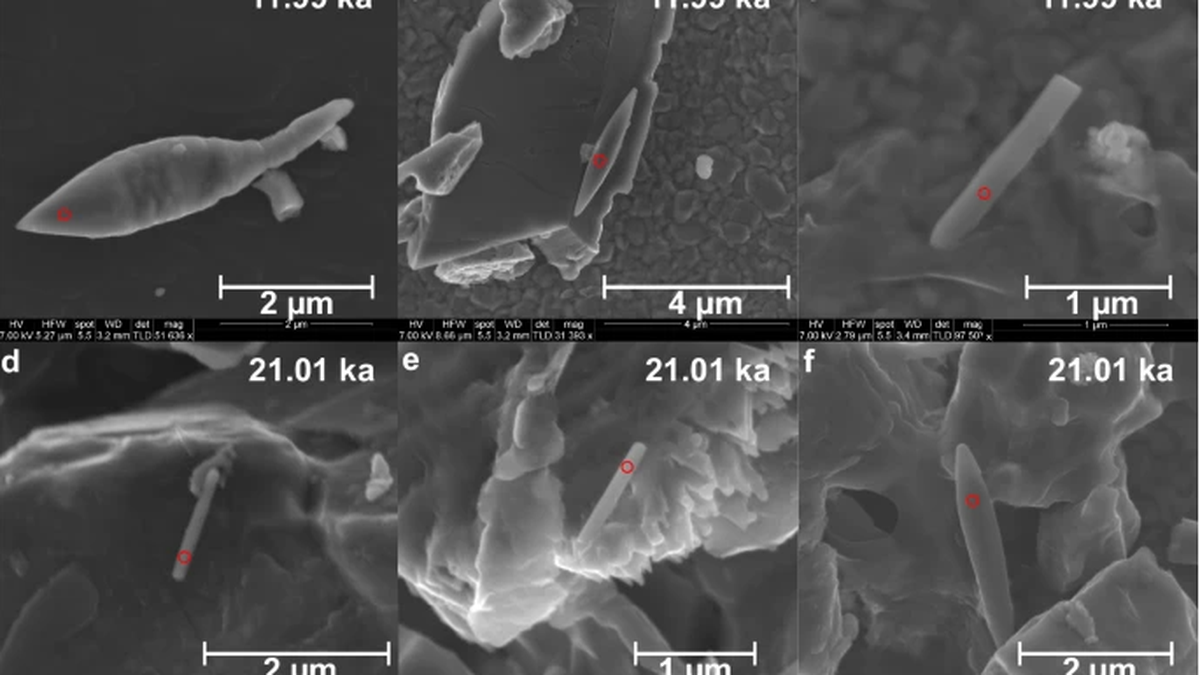Geography
Magnetic Fossils in Bay of Bengal
- 05 Apr 2024
- 5 min read
For Prelims: Magento Fossils, Magnetotactic bacteria, Earth's magnetic field, Paleocene-Eocene Thermal Maximum, Middle Eocene Climatic Optimum, Bay of Bengal, Council of Scientific and Industrial Research, National Institute of Oceanography, Electron Microscopy
For Mains: Significance of Study of Magneto Fossils.
Why in News?
Recently, scientists have unearthed a 50,000-year-old sediment, a massive magneto fossil found deep in the Bay of Bengal, marking one of the youngest discoveries of its kind.
- Scientists at CSIR-National Institute of Oceanography, used magnetic analyses and electron microscopy to study a sediment sample from the southwestern Bay of Bengal.
What are the Key Findings of the Study?
- Monsoon Fluctuations: Analysis of sediment samples indicated fluctuations in monsoon strength during the last Glacial Maximum-Holocene period, impacting weathering and sedimentation.
- Optimal Conditions for Magnetic Fossil Growth: The study suggests that warming events are not necessary for giant magneto fossil formation; instead, an optimal balance of iron, organic carbon, and suboxic conditions is crucial.
- Information Encoded by Magnetofossils: Magnetofossils encode information about past environmental conditions, including nutrient availability, oxygen levels, and water stratification in ancient aquatic environments.
- Rivers like Godavari, Mahanadi, Ganga-Brahmaputra, Cauvery, and Penner, discharging into the Bay of Bengal, contributed to magneto fossil formation by providing nutrient-rich sediment and reactive iron.
What are Magento Fossils?
- About:
- "Magneto Fossils" refer to fossilised remains of magnetotactic bacteria that contain magnetic minerals.
- Magnetotactic bacteria leave fossilised magnetic particles in geological records.
- Magnetotactic Bacteria:
- Magnetotactic bacteria are mostly prokaryotic organisms that arrange themselves along the earth’s magnetic field. It was discovered by Salvatore Bellini in 1963.
- These organisms follow the magnetic field to reach places that had optimal oxygen concentration. This process is facilitated by the presence of iron-rich crystals within their cells.
- Magnetotactic bacteria create tiny crystals of magnetite or greigite within their cells to navigate changing oxygen levels and sediment saturation in water bodies.
- Crystals within magnetotactic bacteria are arranged in a chain configuration through magnetotaxis.
- Rare giant magneto fossils are less common than conventional magnetic fossils, these are likely produced by eukaryotes rather than bacteria.
- Origin of Magnetofossils:
- Most giant magnetofossils have been found in sediments dating to two geological time periods — Paleocen-Eocene Thermal Maximum (roughly 56,000 million years ago) and Middle Eocene Climatic Optimum (about 40 million years ago) — both of which were known for a rise in global temperature.
- It suggested that the magnetofossils formed only during periods of extreme warming.
- Discovery of giant magneto fossils from the Bay of Bengal were determined to be from the late Quaternary period, approximately 50,000 years ago, making them the youngest giant magneto fossils discovered to date.
- The present study challenges the assumption that the magnetofossils formed only during periods of extreme warming.
- Most giant magnetofossils have been found in sediments dating to two geological time periods — Paleocen-Eocene Thermal Maximum (roughly 56,000 million years ago) and Middle Eocene Climatic Optimum (about 40 million years ago) — both of which were known for a rise in global temperature.
| Prokaryotes | Eukaryotes |
|
|
|
Drishti Mains Question: Q. Discuss the Magento Fossils and the role of magnetotactic bacteria in their formation. |
UPSC Civil Services Examination, Previous Year Question (PYQ)
Prelims:
Q. The word ‘Denisovan’ is sometimes mentioned in media in reference to (2019)
(a) fossils of a kind of dinosaurs
(b) an early human species
(c) a cave system found in North-East India
(d) a geological period in the history of Indian subcontinent
Ans: (b)








